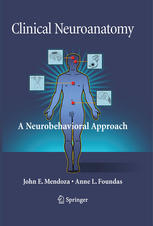

Most ebook files are in PDF format, so you can easily read them using various software such as Foxit Reader or directly on the Google Chrome browser.
Some ebook files are released by publishers in other formats such as .awz, .mobi, .epub, .fb2, etc. You may need to install specific software to read these formats on mobile/PC, such as Calibre.
Please read the tutorial at this link: https://ebookbell.com/faq
We offer FREE conversion to the popular formats you request; however, this may take some time. Therefore, right after payment, please email us, and we will try to provide the service as quickly as possible.
For some exceptional file formats or broken links (if any), please refrain from opening any disputes. Instead, email us first, and we will try to assist within a maximum of 6 hours.
EbookBell Team

5.0
98 reviewsThe collaboration of a clinical neuropsychologist and a behavioral neurologist, Clinical Neuroanatomy expands upon similar texts by offering an exceptionally extensive review of higher cortical – behavioral functions and their anatomical substrates. While a major text for students and clinicians in neuropsychology, it is highly relevant for behavioral and traditional neurologists, neuropsychiatrists, and others who have an interest in exploring the mysteries of brain-behavior relationships.
This book begins with a traditional review of the basic internal and external morphology, major nerve and fiber tracts, behavioral correlates, and clinical syndromes associated with spinal cord, brain stem, and cerebellum designed to reacquaint students and practicing clinicians with the functional anatomy of the subtentorial central nervous system. However, as the text was specifically geared to meet the needs of those practitioners whose primary interest is in what might be termed "higher order cognitive-behavioral function," the main focus of the text is on the brain itself. Borrowing heavily from a Lurian tradition, the central chapters reflect an attempt to offer more detailed, integrated, and, at times, theoretical models of cortical systems and their internal organization. Additional chapters highlight vascular anatomy and associated pathology, as well as neurochemical systems and their potential clinical relevance. The authors’ teaching style enlivens the material with clinical examples and welcomed touches of subtle humor.
-Nearly 300 illustrations help identify key structures and pathways, as well as providing clinical and pathological examples
-Text emphasizes the suspected roles of CNS structures in normal behavior and common consequences of lesions affecting these structures.
-Throughout the text, assessment techniques and guidelines are provided to aid in the examination of the various functional systems.
-Separate sections review the basics of bioelectric and neurochemical transmission at the neuronal and synaptic level.
-Tables, footnotes, and an extensive glossary aid the reader in retaining, understanding, and finding points of particular interest.